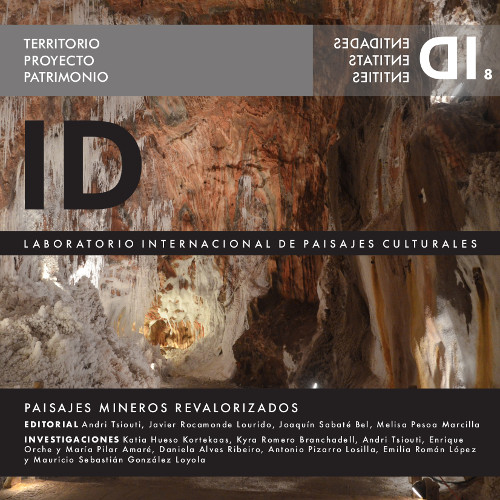SPILLOVER EFFECTS OF MINER CULTURAL LANDSCAPES Cultural transformation of Zollverein Mines in Essen, Ruhr
DOI:
https://doi.org/10.5821/identidades.9034Keywords:
Cultural Landscape, Industrial Heritage, Cultural Industries, Ecological RestorationAbstract
Industrial regions go through transformations when their main activity becomes obsolete. Facing the decline, cities like Essen in the Ruhr region, see the opportunity for sustainable development in the regeneration of their key industrial spaces such as the Zollverein coal mine. This article studies the way the city on the one hand and the factory on the other, shift their main activity from heavy industry to cultural industry, with an emphasis on environmental regeneration. Finally, both paths are compared, which actually flow in parallel, in an ambitious succession of transformations that culminate in major events such as IBA Emscher Park, the European Cultural Capital or the European Green Capital, as well as important recognitions such as World Heritage for the UNESCO. Therefore, the effectiveness of the interventions is proven, at least, for now.References
AZKARATE, A. AZPEITIA, A. (2016): “Paisajes urbanos históricos: ¿Paradigma o
subterfugio?â€, en Chavarria, Alexandra, Alla ricerca di un passato complesso. Contributi in
onore di Gian Pietro Brogiolo per il suo settantesimo compleanno, Zagreb, pp: 219/238.
BEATLEY, T. (2000): Green Urbanism: Learning from European Cities, Island Press, Washington
D. C. “Urbanism and Cities have an important role […] in shaping more sustainable places, communities
and lifestyles†p.5.
ECCE, European Centre for Creative Economy (2013): Forum d’Avignon Ruhr (2013) Culture is the Key.
Ecorys UK Ltd. (2011): REPORT FROM THE COMMISSION Ex Post evaluation of the 2010 European Capitals of Culture (Essen for the Ruhr, Pécs, Istanbul)
EU Commission. (26 September 2012): “Promoting cultural and creative sectors for growth and jobs in the EU.â€
EU Open Method of Coordination Expert Group on Cultural and Creative Industries (2012): POLICY HANDBOOK. How can cultural and creative industries contribute to economic transformation through smart specialisation?
FELICE, A. (2007): “La fábrica cultural, otra forma de producción simbólicaâ€, Reflexión Académica en Diseño y Comunicación, nº 8, pp. 85-94.
KEIL, A. y WETTERAU. B. (2012): Metropolis Ruhr. A Regional Study of the New Ruhr
KERR, L. (2017): A TALE OF TWO GREEN CITIES. Exploring the role of visions in the development of green infrastructure in two European Green Capital Cities.
LANDRY, C. (1995): The Creative City: A Toolkit for Urban Innovators. Earthscan, London.
ROMERO, K. (2018): PLANEAMIENTO REGIONAL INDUSTRIAL Y CULTURAL EUROPEO. Comparativa de polÃticas territoriales en la región del Ruhr y Barcelona
RUHR (2017): Paisaje cultural industrial del Ruhrgebiet. Informe preliminar de Destacado Valor Universal para el Patrimonio Mundial de la UNESCO.
SAUER, C. O. (1925): The morphology of Landscape. University of California Press,
Berkeley.
UCLG - European Economic and Social Committee Culture Action Europe and Agenda 21 for Culture. (2016): Culture, Cities and Identity in Europe, Study.
UNESCO (2011): Recomendación sobre el paisaje urbano histórico. UNESCO, Paris.
Downloads
Published
Issue
Section
License
Those authors who have publications with this journal, accept the following terms:
a. Authors will retain their copyright and guarantee the journal the right of first publication of their work, which will be simultaneously subject to the Creative Commons CC BY-NC-ND-4.0 recognition license that allows third parties to share the work provided that its author and its first publication are indicated in this journal, but they cannot be changed or used commercially.
b. Authors may adopt other non-exclusive license agreements for the distribution of the version of the published work (eg: deposit it in an institutional telematic archive or publish it in a monographic volume) provided that the initial publication in this journal is indicated.
c. Authors are allowed and recommended to disseminate their work through the Internet (e.g. in institutional telematic files or on their website) before and during the submission process, which can lead to interesting exchanges and increase citations. of the published work. (See The effect of open access).













